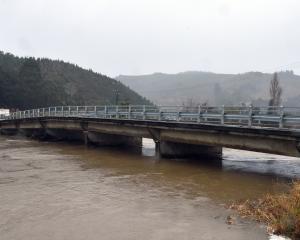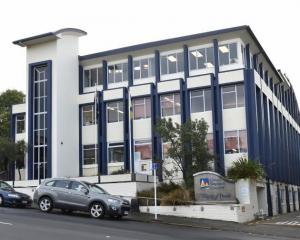A rare piece of good news emerged for beleaguered ratepayers this week: the Otago Regional Council draft annual plan shows no increase in the general rate. The ORC chairman points out it is a draft budget only, but nevertheless, how refreshing. Why can't other councils do the same?
To be fair, as a regional council, the ORC is not charged with those large and expensive tasks like supplying water, processing sewage or maintaining roads which fall to district and city councils. But, as clearly evidenced in the Canterbury regional council's woes, the regulatory and planning demands are exacting and no easier with every passing year.
Although the Otago council's long-term community plan predicted a rate increase, corporate services director Wayne Scott said higher-than-expected interest income and work on cost control helped reduce the need for general rates.
It is difficult to know from the outside about cost control, although Mr Scott and the regional council over many years mostly have had a good reputation for close care with expenditure. One glaring exception is the council's planned $31 million headquarters project on the waterfront.
It has been "parked", as options are considered, and this has, at least for the time being, cut spending from reserves. In turn, much more interest income to subsidise the general rates is available - $887,000 instead of $432,000. What this makes obvious is spending from reserves does come with costs to ratepayers.
While there is widespread agreement the current headquarters are too small and inadequate and something substantial needs to be done, the fact that money is coming from reserves - or Port Otago dividends for that matter - does not sidestep the issue that it is ratepayers' money and such spending will impact on them.
Any spending justifications have to be on the same basis as if the money came directly via rate demands.
The "parking" of the headquarters also allows a special dividend from Port Otago to be reduced from $12.7 million to $6.8 million. If Port Otago's balance sheet is strengthened and debts limited, its position in the future to subsidise rates through dividends will be a little stronger, as will its position in negotiations with Lyttelton Port Company.
It seems likely later this year that the regional council, 100% owner of Port Otago, will face specific recommendations on a merger of port operations with Lyttelton, the council already agreeing in principle with the idea.
The council sees its ownership role as one of trustee for the people of Otago, and decisions on, and details about, the company's future will be momentous. It could well be that while the strictly business pro-merger case is promoted (that is a merger to maximise profits and reduce risks), other matters need to be considered.
Would Dunedin and Port Chalmers suffer long term if, in essence, management for combined operations was primarily based in big sister Christchurch? Would a merger of operations be the first step which later led to the downgrading of Otago's port?
Before becoming too enthusiastic about no general rate rise, it is worth noting that the bulk of regional rates for most people are "targeted". These include rates for transport (subsidising buses, now including in Queenstown), the Forsyth Barr Stadium, clean air, river management and flood and drainage schemes.
Although no change is the norm, river management rates are rising for the Lower Waitaki and Wanaka and targeted flood and drainage scheme rates are increasing, in some cases markedly, for the Lower Taieri, East Taieri, West Taieri, the Lower Clutha and the north end of Dunedin for the Leith Lindsay scheme.
The council has began reviewing how the Taieri work will be funded after opposition to current models. Despite these increases, the bottom line is that, in a time of spiralling rate increase, general rates for core Otago Regional Council rates have been held.
Whatever the reasons, this is an outcome towards which other councils must strive.












